Michigan is an excellent place to fish. There are many lakes, rivers, and ponds to choose from. Some fish species you may find in this lovely state are trout, bass, salmon, and steelhead. You can also find pike and walleye in the state. But what about brown trout? Is this fish species common? Follow along to discover the largest brown trout ever caught in Michigan, and fun facts about this trophy fish!
What is the Largest Brown Trout Ever Caught in Michigan?
The largest brown trout ever caught in Michigan was a true beast! In 2009, Thomas Martin Healy impressively caught a 43.75-inch brown trout in the Manistee River. It weighed a whopping 41 pounds and 7.2 ounces. Fun fact, the largest tiger trout ever caught in Michigan was also caught in the Manistee River, but in the North Branch.

The largest brown trout ever caught in Michigan was 41 pounds and 7.2 ounces. It was also 43.75 inches long.
©iStock.com/MarceloDufflocqw
About Brown Trout
Brown trout are common fish in the United States, despite living outside of their native range. The anadromous forms are called sea trout. Currently, because of their wide range, brown trout are listed as Least Concern on the IUCN Red List. They are popular gamefish and have been since at least the 1400s in Europe. Keep reading to learn more about this speckled fish.
Appearance and Size
Brown trout have a distinct appearance. They are long and slender with a narrow head with large mouths. Brown trout also range in color depending on the region and type. For instance, some freshwater brown trout are silvery with spots, while others are more reddish-brown and are covered in dark spots with lighter halos. Brown trout are very long although considered a medium-sized fish. Mature brown trout can weigh as little as 2.2 pounds or as much as 45 pounds.

Brown trout range a lot in coloration and size. They can weigh anywhere from 2.2 pounds to 45 pounds.
©iStock.com/abadonian
Distribution and Habitat
Brown trout have a large native range. You can find them throughout Europe and West Asia into the Atlas Mountains in North Africa. Although their native range isn’t North America, brown trout are very common. They were first introduced in Canada in 1883. In South America, they were brought by 1904 starting in Argentina. Brown trout in the United States also first appeared in 1883. This is when Fred Mather, a New York pisciculturist and angler, obtained brown trout eggs from the president of the German Fishing Society.
Diet
So, what do brown trout eat? Brown trout commonly eat several animal prey species depending on their region and availability. According to the National Park Service, the diet of brown trout depends on their size too. For instance, brown trout larger than 12 inches hunt for larger fish, small mammals, salamanders, and crayfish. However, brown trout less than 12 inches eat smaller prey, like insects.
Predators
Brown trout have a few predators they watch out for, including larger fish, piscatory birds, and water snakes. They are also heavily preyed on by humans and other mammals, depending on the environment. Mink and river otters are common predators and hunt brown trout.
Other Fish in Michigan
Michigan has an endless amount of fishing opportunities, and not just for brown trout. The state has over 11,000 recorded inland lakes. Follow along to discover other fish you can find in the state and their amazing state records!

Michigan has a lot of fishing opportunities. It’s home to over 11,000 lakes.
©Doug Blunt/Shutterstock.com
Largemouth Bass
The first fish on our list is the largemouth bass. They are freshwater fish native to the eastern and central United States, southeastern Canada, and northern Mexico. However, you can find them throughout the United States. They are commonly stocked in some lakes. Largemouth bass olive-green to greenish-gray fish with a maximum unverified weight of 25 pounds and 1 ounce. Most largemouth bass though only weigh between 5 to 15 pounds. A largemouth bass over 10 pounds is impressive.
In Michigan, the largest recorded largemouth bass weighed 11 pounds and 15.4 ounces. Interestingly, there are two records for a largemouth bass, tied. William Maloney caught a 27-inch largemouth bass beast in 1934 in the Big Pine Island Lake. Two decades later, Jack Rorex caught a 26-inch largemouth bass in the Bamfield Dam.
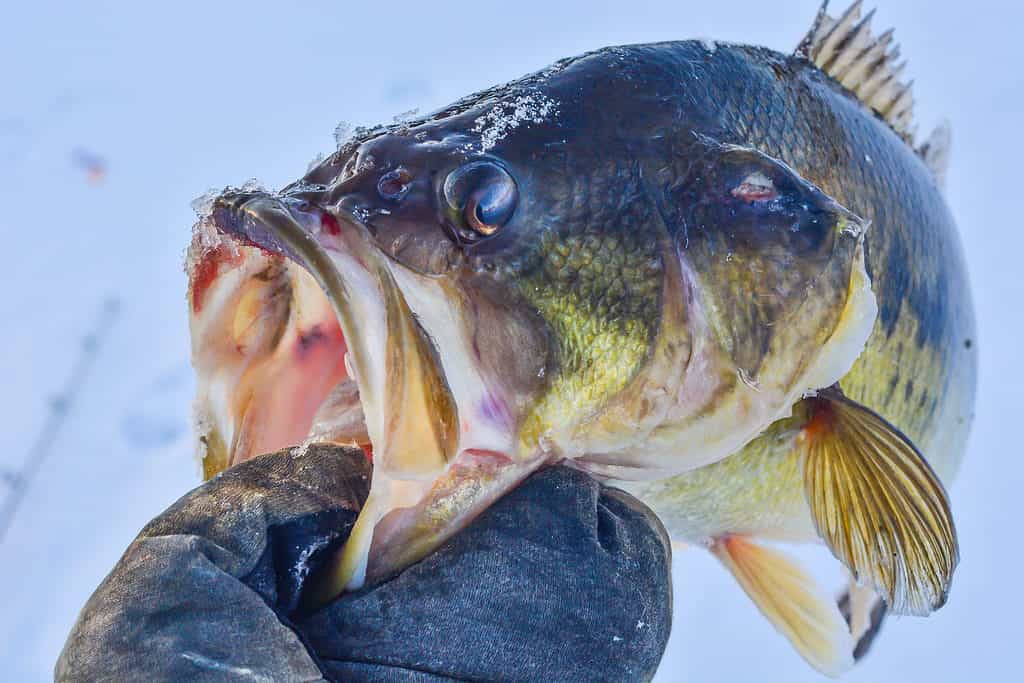
The largest largemouth bass ever caught in Michigan weighed nearly 16 pounds.
©iStock.com/michaldziki
Northern Pike
The next fish on our list is the northern pike, which is known for its impressive length. Northern pike are freshwater fish in salty and fresh waters of the Northern Hemisphere. They have a wide range and are especially abundant in the United States. These popular gamefish, on average, are about 18 to 20 inches long, sometimes longer. The largest northern pike ever caught in the world was 59 inches long, making it nearly 6 feet long!
How does this compare to the largest northern pike caught in Michigan? Larry Clough caught a monster of a northern pike in 1961. He caught a 51.5-inch and 39-pound northern pike in Dodge Lake. No one has beaten the record in over 60 years.
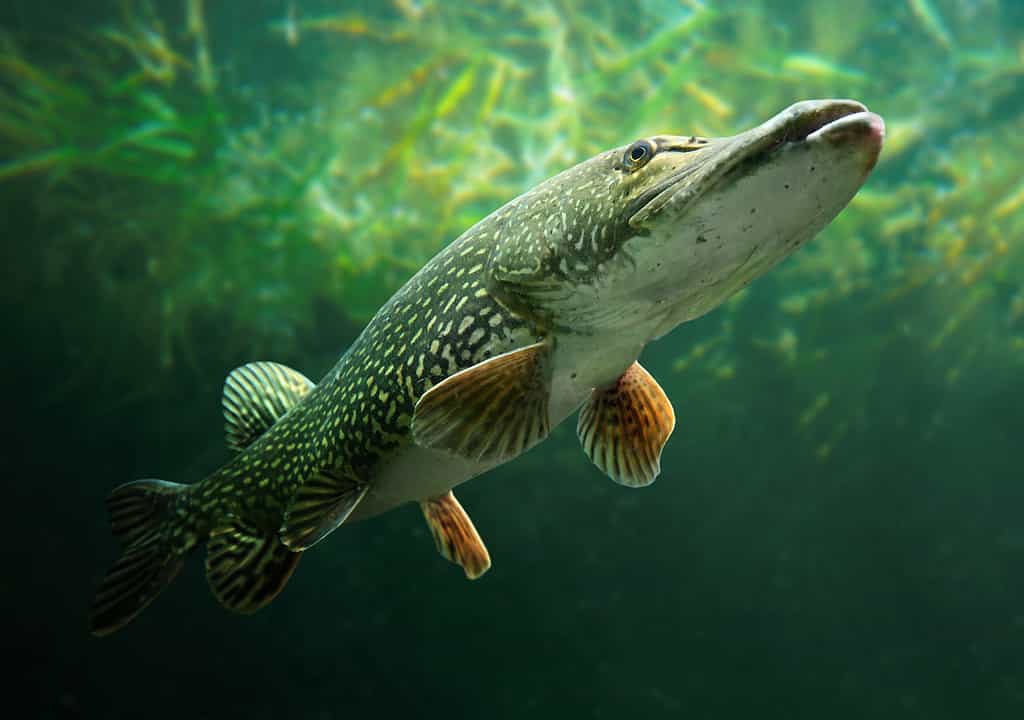
Northern pike are common in the United States.
©iStock.com/abadonian
Longnose Gar
Like northern pike, longnose gars are very long. These large fish have a wide range and are very old. They are sometimes called per-historic or ancient fish as they have a lot of similarities with old ancestors. Longnose gars live throughout the eastern United States and are very common in the south, like Florida. In Michigan, you can find longnose gars in most inland lakes, large rivers, and Great Lakes waters. These large, hard fish can weigh as much as 43 pounds!
Although not as large, the largest longnose gar ever caught in Michigan is still impressive. In 1995, Dennis Promo caught an 18-pound longnose gar. This longnose gar was 53 inches long and caught in Williamsville Lake.
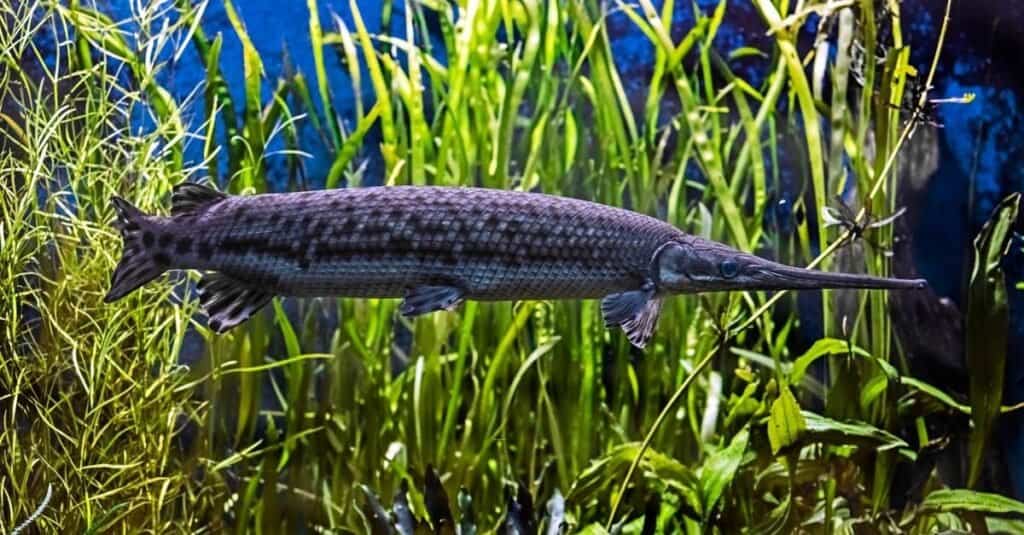
The largest longnose gar ever caught weighed 43 pounds.
©Mikhail Blajenov/Shutterstock.com
Bluegill
Another fish commonly found in the state of Michigan is the bluegill. The scientific name for a bluegill is Lepomis macrochirus. Bluegills have a wide range in the United States. They are commonly stocked in many lakes, rivers, and ponds. Bluegills are named after their bluish region on the cheek and gill cover. These tall and flatfish are about 7.5 inches long. The largest bluegill ever caught in Michigan is almost double the size of an average bluegill.
Gary Saylor caught a 13.75-inch bluegill in Vaughn Lake. He caught this 2-pound and 12-ounce impressive bluegill in 1983 and has held the record since.
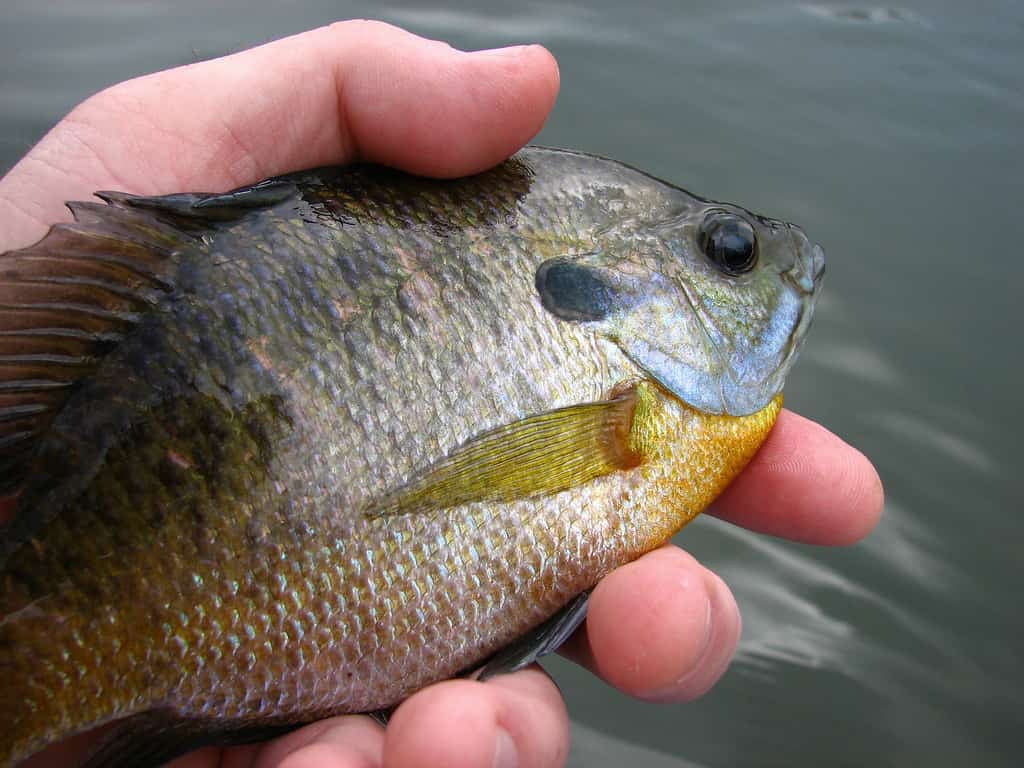
The largest bluegill ever caught in Michigan was 13.75 inches long.
©iStock.com/Dewitt
Warmouth
You can also find small warmouths in Michigan. These little fish are members of the sunfish family. On the IUCN Red List, they are listed as Least Concern. Warmouths are dark brown and mottled. They have orange-golden bellies and the male has a bright orange spot at the base of the dorsal fin. Most warmouths range from 4 to 10 inches long, but they can measure as much as 12 inches. Warmouths primarily live in the United States, although you can find some breeding populations in southern Canada.
In Michigan, the largest warmouth ever caught weighed 1 pound and 6.08 ounces. Michael Berg caught this 11-inch warmouth in Great Bear Lake.
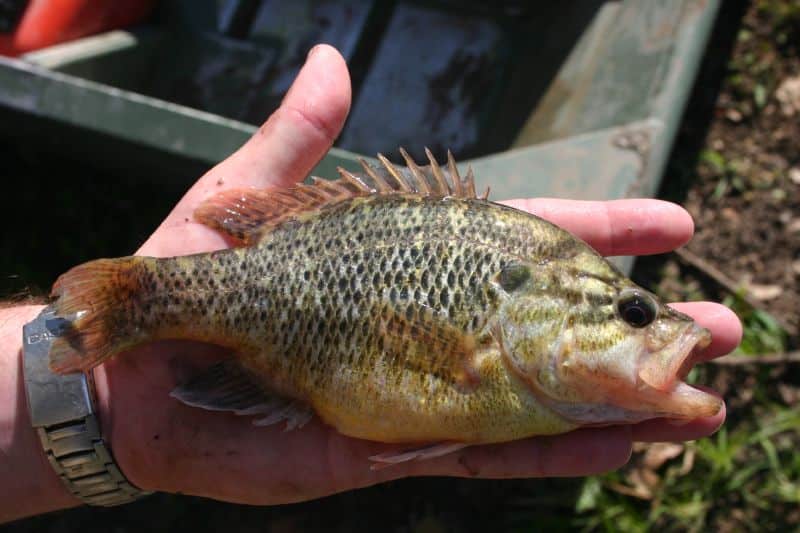
On the IUCN Red List, warmouths are listed as Least Concern.
©Clinton & Charles Robertson from RAF Lakenheath, UK & San Marcos, TX, USA & UK / CC BY-SA 2.0 – Original / License
Lake Sturgeon
Last but not least is the lake sturgeon. This tough fish is massive and thick. You can find lake sturgeon throughout the Mississippi River drainage basin south to Alabama and Mississippi. This fish also lives in the Great Lakes and the Detroit River. These migratory fish swim far looking for suitable spawning conditions and food. Possibly one of the more impressive things about lake sturgeon is their size. On average, they are about 6 feet long and weigh up to 200 pounds, sometimes more. Don’t let their size fool you though, lake sturgeon are harmless to humans and sometimes called gentle giants.
In Michigan, the largest lake sturgeon was an impressive 193-pounds. Joe Maka Jr. caught this beast in 1974 in Mullett Lake. It was 87 inches long, meaning it was over 7 feet!
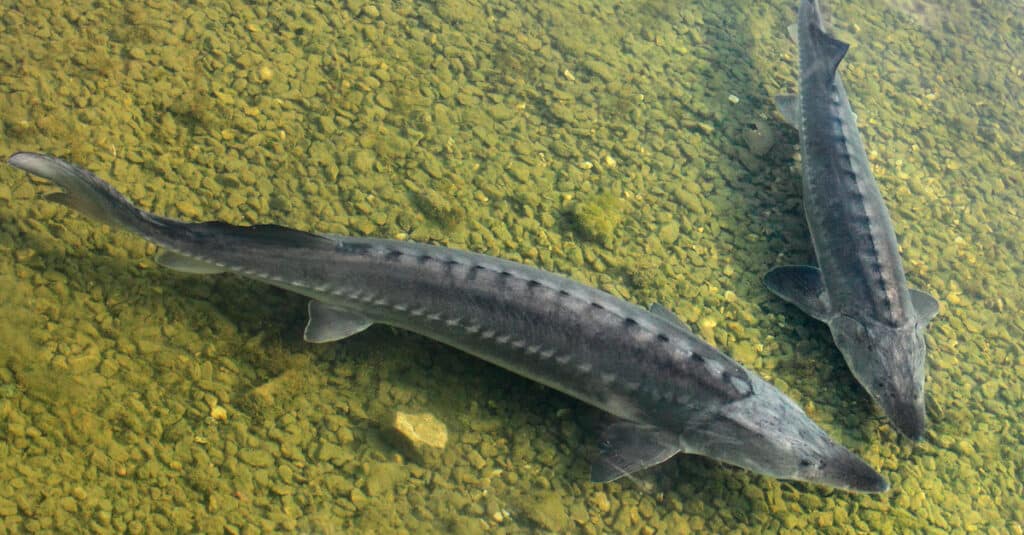
Lake sturgeon are gentle giants.
©Kletr/Shutterstock.com
The photo featured at the top of this post is © iStock.com/KevinCass
Thank you for reading! Have some feedback for us? Contact the AZ Animals editorial team.







